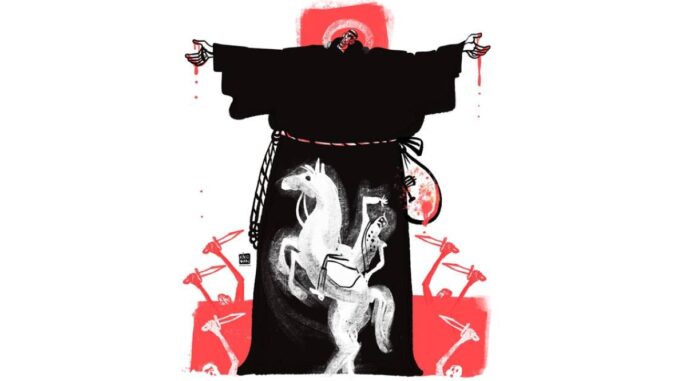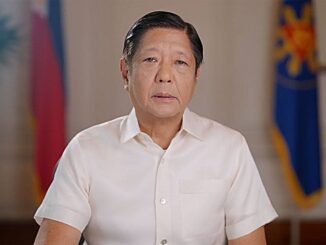
First of two parts
DURING the 333 years of Spanish rule in the Philippines, real power rested not on the civilian and military leaders but on the friars. They could be found in every parish in the country, ministering not only to the souls of the natives but to their other needs. A friar could reduce your taxes, lease you land to farm, or help you build a house.
They were a conservative lot and looked after their fiefdoms with the eyes of a hawk. Their feathers were ruffled with the arrival of Don Fernando Manuel de Bustillo Bustamante y Rueda in 1717 as the 37th governor-general of the Philippines. Usually called mariscal (marshal) as he was the first field marshal to govern the Islands, Bustamante was the former alcalde mayor of Trascala in Nueva España (modern-day Mexico).
The new governor was a stern soldier and an officer of the incomparable Spanish infantry. Already accomplished, he wanted to do more. And he believed that his appointment came straight from the king, who told him to brook no interference in the way he ran the colony.
But then and now, things were different in the Philippines.
It was not just a colony founded on trade but an outpost of Christianity. It was a medieval kind of Christianity, dark and foreboding. In 1619, Spain wanted to abandon the colony because it was expensive to maintain. But Fray Morales, the emissary of the friars, threw himself at the feet of King Philip and begged him not to abandon a quarter of a million souls who had been converted to Christ in the colony. The king yielded, and the order was revoked.
The Philippines was still a poor colony when Bustamante’s ship arrived in Manila. He had sterling integrity and bravery unmatched in his time. His valor had been tested on the battlefields of Europe. One day, Bustamante found irregularities in the management of the royal funds, the hacienda real. He forthwith decided to introduce reforms.
On a hot day, when small waves of heat seemed to writhe before him, the governor-general visited the treasury — and found it empty. Many loans had been given to unknown individuals, with the debts to be collected God knows when. That week, the galleon ship Santo Cristo was arriving in Cavite. It contained the annual subsidy — plus precious cargo from Acapulco that could be sold to add to the colony’s coffers.
But Bustamante was again told that the rich cargo had already been consigned to third parties, who would then manage the disposal of the goods. Quickly, Bustamante ordered an embargo. The names of the third parties were made public. They included the friars, as well as the favorite merchants and officials — members of the Real Audiencia, the supreme council, even the courts! Under assumed names, they had borrowed money from the royal treasury and invested it in the galleon trade. They easily gained a profit of 50 percent from this trade.
But Bustamante had a violent temper and a righteous sense of indignation. He stopped all these, to the consternation of the friars. The royal treasury grew. With this money, he founded the presidio of Zamboanga, a stronghold against the Moros of Mindanao, which had been abandoned years earlier. Only the Jesuits wanted the reoccupation and fortification of Zamboanga. Ranged against them were the friars, who envied the Jesuits’ popularity among the people.
Undaunted, Bustamante built the presidio at Zamboanga and named it after the Virgin of Pilar. He had 60 cannons mounted around the fort. He also built the forts of Labo and Taytay on the coast of Palawan. They remain today, feats of medieval engineering in the midst of wild scenery on land that still hugs the sea.
But Bustamante did not stop. He probed the purloining from the treasury amounting to $750,000, which was the colony’s budget for three years. Commerce flourished, and the governor threw the defaulters into prison, no matter how high their rank or the influence they held. Fear roosted in the hearts of the corrupt — and the friars decided Bustamante must be destroyed.
Fray Francisco de la Cuesta was the archbishop of Manila, and he was the bete noir of the governor-general. He excommunicated the royal officials who followed the marirscal’s orders. One day, Bustamante received an anonymous letter warning him of the fate of Governor Diego de Salcedo, who dared to meddle with the work of the friars.
But Bustamante reminded everyone that his commission came from the king, and he scorned all threats. Archbishop Cuesta ignored his authority. He and the other friars began to plot against the governor-general. News of it swiftly reached Bustamante. The friars also prepared places of refuge in the churches and convents for the people hounded by Bustamante, where they could claim sanctuary.
The governor then issued a proclamation calling upon all males over 14 years old to organize themselves into a loyal battalion to defend the king. This force was armed with matchlock and pike; it had its corps of drummers. It was led by officers who exhibited more zeal for the royal uniform than for the cassock.
However, as soon as night fell, the friars shuffled through the dimly lit streets of Manila and arrived at a rendezvous near the governor’s palace. Legal plunderers, unscrupulous officials, and men of the cloth met nightly and hatched a plan that would end Bustamante’s reign.
The old mariscal heard of the secret cabal being held almost under the very windows of the palace. He ordered the arrest of its members, but the royal notary, Don Antonio de Osejo y Vazquez, who had helped himself to the treasury, sought sanctuary in the cathedral.
Bustamante immediately ordered Osejo’s arrest, although knowing full well that the arrogant Cuesta would not honor the order. The cathedral was only a few yards away from the palace. Under Archbishop Cuesta’s importuning, Dominican canon law experts from the Real Universidad de Santo Tomás declared that “under no circumstances or conditions could civil authorities exercise jurisdiction within sacred places, even under the orders of the governor and of the Audiencia.” The die had been cast.
At the same time, the annual galleon was about to sail for Acapulco. Bustamante was told that the ship carried a list of charges against him by the friars, to be delivered to the Inquisition in Mexico. So he sent a trusted captain, accompanied by a boatload of soldiers, to interview the general of the galleon.
The latter was a well-paid partisan of the friars, and a sworn enemy of Bustamante. He haughtily requested to know the meaning of the interview. After reading the governor’s letter, he called the marines, who, taking the landsmen by surprise, threw both officer and men into the bay. Then, he tore the letter and scattered the pieces on the water. Immediately afterward, he had the anchors hoisted and the sail set, and he squirreled away for Acapulco.
Bustamante sent a galley in hot pursuit, but the galleon, taking full advantage of the gales, blew her way to the high seas and made her escape.
The incensed governor imprisoned all those whom he thought were plotting against him. The royal prisons were soon full, and the churches and convents were full, as well, with the culprits seeking sanctuary. The governor again demanded Osejo ‘s head, but the archbishop again refused.
And then, the inevitable happened. To avoid the descent into anarchy, the governor ordered the arrest of the archbishop and the Dominican friars, who were sent under guard to Fort Santiago. The friars were shocked at what they deemed an outrage. All the bells of Intramuros tolled a solemn protest against the sacrilege. The loyal battalion was ordered to assemble at the firing of a cannon from the citadel and to come fully armed to defend the king. Soon, the streets teemed with people both afraid and curious at the turn of events.
Fearing that the governor might also throw them into prison, the friars organized a rabble under the leadership of Diego Salazar, a slave of Don Santiago Lucea; the senior oidor, Juan Gainza; and others of their ilk. They were all armed with lethal daggers and spears, some of which came from the convents.
The horde soon swelled with the arrival of the partisans of the merchants, the friars’ retainers, and the corrupt officials. The rabble was both blessed by the church (as represented by the friars) and armed with its terrors. Its members were assured of rewards below and immunity on high. They were also promised Heaven.
To be continued





Be the first to comment